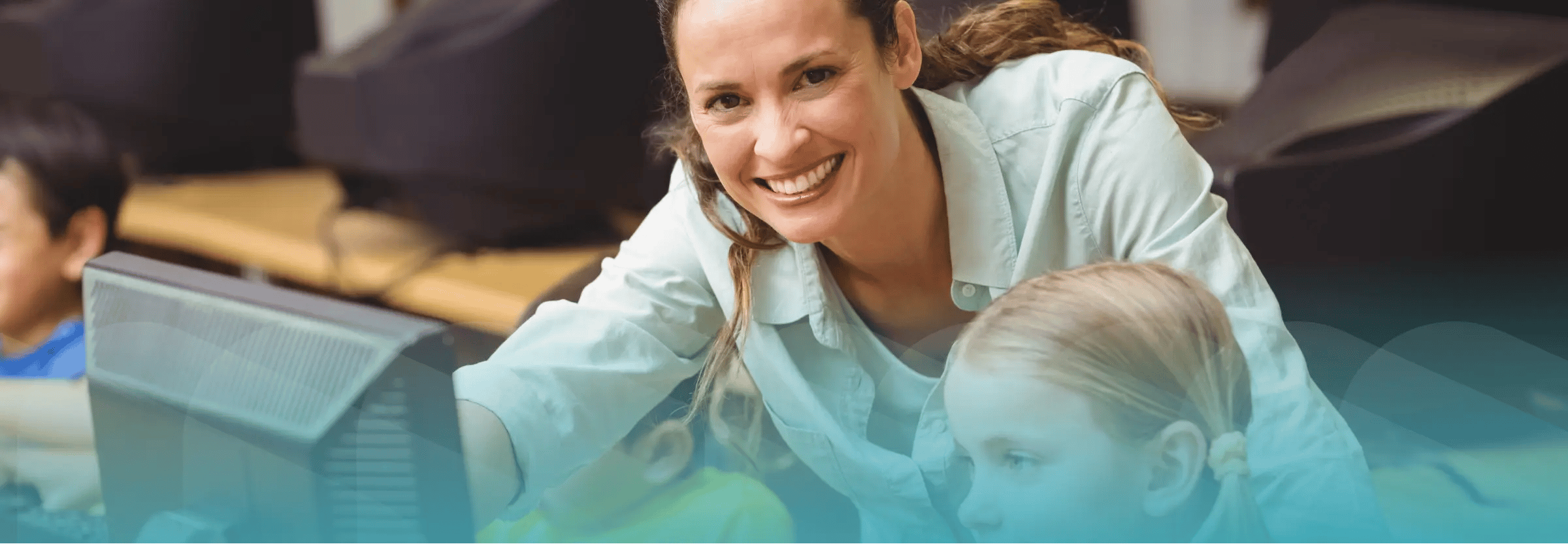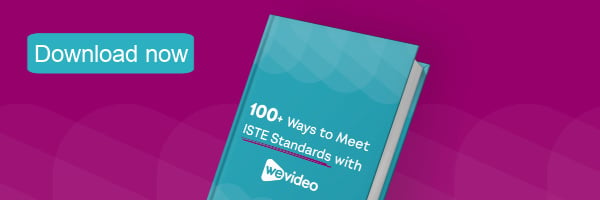
Using technology in the classroom is an important way to build students’ 21st-century skills, but educators benefit from having a plan and set of standards to follow in order to do so.
Cue: the ISTE standards for teachers. Created by the International Society for Technology in Education, the ISTE standards for teachers are a set of technology-driven teaching standards that help educators intentionally integrate technological teaching tools into their curriculum.
Let’s take a closer look at what they are, as well as how to use them in your own instructional practices.
What are the ISTE standards?
The International Society for Technology in Education developed standards for using technology in the classroom for both students and teachers. The ISTE standards for teachers are a set of seven standards designed to empower educators to improve their practices, collaborate with other teachers or professionals, and rethink how they are currently using technology. These standards give teachers a starting point when using technology or digital lesson plans in the classroom.
The seven ISTE standards for teachers include:
- Learner: Educators improve their practices over time and push themselves to explore new areas of technology.
- Leader: Educators support student empowerment by being leaders in implementing technology best practices in the classroom.
- Citizen: Educators instruct and inspire students to participate responsibly in our digital world.
- Collaborator: Educators collaborate with both students and colleagues to improve and implement new practices within the classroom.
- Designer: In developing new student-focused learning activities, educators differentiate and reach each student individually using technology.
- Facilitator: Educators provide learning opportunities through technology to support student achievement and growth.
- Analyst: Looking at data and student response information, educators target specific learning strategies to improve and support student learning outcomes.
Student standards vs. teacher standards
The ISTE standards for educators differ in a few ways from the ISTE standards for students. Within the ISTE standards for educators, there’s a focus on how educators can empower students to reach their full potential and grow academically, while the student standards focus more on specific knowledge and skill sets. The student standards include:
- Empowered Learner: Students leverage technology to take an active role in choosing, achieving, and demonstrating competency in their learning goals, informed by the learning sciences.
- Digital Citizen: Students recognize the rights, responsibilities, and opportunities of living, learning, and working in an interconnected digital world, and they act and model in ways that are safe, legal, and ethical.
- Knowledge Constructor: Within the classroom, students critically curate various resources using digital tools to construct knowledge, produce creative artifacts, and make meaningful learning experiences for themselves and others.
- Innovative Designer: Students use a variety of technologies within a design process to identify and solve problems by creating new, useful, or imaginative solutions.
- Computational Thinker: Students develop and employ strategies for understanding and solving problems in ways that leverage the power of technological methods to develop and test solutions.
- Creative Communicator: When using complex communication skills, Students communicate clearly and express themselves creatively for a variety of purposes using the platforms, tools, styles, formats, and digital media appropriate to their goals.
- Global Collaborator: Students use digital tools to broaden their perspectives and enrich their learning by collaborating with others and working effectively in teams locally and globally.
Breaking down the seven ISTE standards for teachers
The ISTE standards for teachers form a solid foundation for technology instruction in the classroom. Each standard comes with its own subsections and intentions. Let's take a quick look at each, plus show you how you can meet each standard with WeVideo!
Standard 2.1: Learner
Educators should be lifelong learners, especially when it comes to learning about technology and how to use it in the classroom. With new technology coming out every day, teachers must be on the lookout for how this tech can positively impact student learning.
The ISTE standard 2.1 is broken into 3 subcategories to make this simple: Setting professional goals, participating in professional learning networks, and keeping up on current research. By implementing these subcategories, educators stay up-to-date with ever-changing trends in using technology in the classroom.
Standard 2.2: Leader
As you advance in your understanding and use of technology in the classroom, it's only natural that you can take what you know and use it to help other teachers and students. Being a leader means that you create and advance a shared vision within your school, working with all stakeholders to move forward on your community’s shared vision. As a leader, it’s also important to advocate for equitable access to digital tools and model digital tool use for both students and other teachers.
Using a video content creation tool isn’t only for students. By using a video creation platform like WeVideo educators can develop and share professional learning and partake in collaborative team sessions designed to bring ideas to life.
Standard 2.3: Citizen
Part of developing student skills today includes providing a framework for students to become productive citizens in the digital world. Educators need to show students how to positively impact the world using technology, creating socially responsible projects and products that help others.
Outside of developing an empathetic and socially responsible digital mindset, educators should also give students a strong foundation of security and ethical practices while working online. Teachers may demonstrate how to evaluate sources for credibility, ensure that students follow legal and ethical guidelines, and demonstrate how to protect and digital privacy. These practices are useful for students not only in an academic setting, but also in their personal lives.
Standard 2.4: Collaborator
Impactful learning and effective teaching don’t happen in a vacuum. Developing high-quality and impactful learning experiences takes collaboration and teamwork. Fostering collaboration doesn’t have to be hard; in fact, teachers can build collaboration right into their lesson plans, allowing students to work with one another on a routine basis.
However, collaboration is not only a student-to-student interaction. Teachers also can get in on the action, collaborating with other teachers and learning alongside students while using technology-based collaboration tools. For educators, this also begins to build cultural competency both with students and with colleagues as collaboration requires individuals to view the world from a different perspective.
Standard 2.5: Designer
Educators are the designers of students' learning experiences within the classroom. Using the ISTE standards for teachers, it’s important to create learner-driven assignments and projects that give all students a chance to be successful. As a designer, teachers need to consider different learners and their needs, design with authenticity in mind, and create an innovative learning environment.
Designing powerful lessons isn’t always about coming up with unique ideas; it's okay to find inspiration from others or to tweak pre-made lessons for your own classroom. The important thing to remember here is that the learner comes first in your designs, this allows them to develop and learn in their own way.
Standard 2.6: Facilitator
More than ever, educators are facilitators of learning experiences rather than deliverers of knowledge. With basic information and factual knowledge available at the click of a button, educators must foster student ownership over their learning. In many ways, this means that for teachers, classroom management now extends to the use of online technology, ensuring that students know how to use the tech and understand the ins and outs of using any particular technology.
Developing online assignments and courses that are engaging is all about nurturing and modeling creativity for students. Educators can teach students how a designer or creator might think and then let students go off on their own learning adventures.
Standard 2.7: Analyst
The final ISTE standard for teachers is being an analyst. With so much data and information available through digital learning platforms and online learning tools, educators must have the skills to sift through what is important and what is not. Using student data, teachers can design alternative assessments, make decisions about where to go next in the lesson, and develop remediation strategies.
Educators can use the data that they gather to communicate with students, parents, and other teachers about a student’s progress toward a standard or end goal. Data can be anecdotal, empirical, or a combination of both. The key is that teachers know where a student is at after the lesson and can use data to make instructional decisions.
With so many new technology-based learning options available, understanding how to use technology in the classroom can be challenging. By following the guidelines set out in the ISTE standards for teachers, you have a place to start when implementing technology in the classroom or developing a technology philosophy for your school and students. These standards are considered best practices and can be implemented by teachers at every level and every content area!
Meet the ISTE standards for teachers with WeVideo

